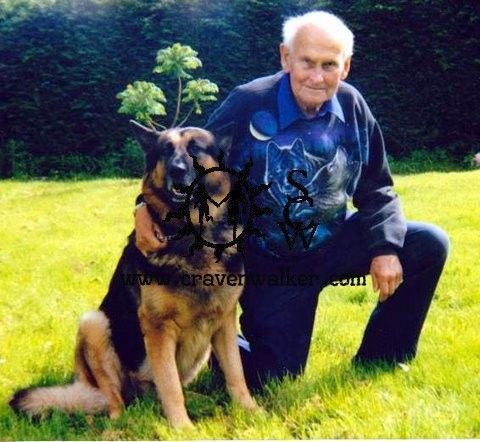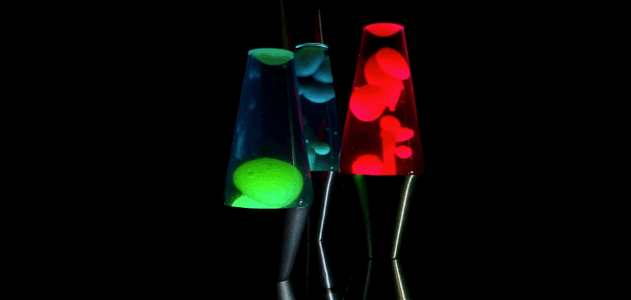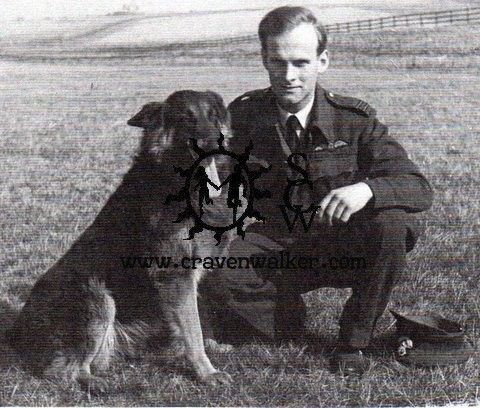
It was the era of Carnaby Street, The Beatles, rocket ships launching into space, the counterculture and psychedelic lights. Like most decades, it had its own vision of taste and style, and there were several pieces of furniture and accessories that shrieked, “The Sixties!” Few, however, were as ubiquitous as one item that was owned by the hip, became de rigueur for college dorm rooms, and was always found in “happening” nightspots.
The item got its start with a British accountant and inventor named Edward Craven-Walker.
Born on the fourth of July, 1918 in Singapore, Craven-Walker served as a squadron leader during World War II during which time he flew a DeHavilland Mosquito over Germany to take aerial photographs. He met the first of his four wives during that time, but it was after the war that he saw something that would change his life.
It was an egg timer.
He spotted the homemade timer in a Dorset pub, something that had been made by a patron who had died long before. What intrigued Craven-Walker was that the timer crafted from a cocktail shaker used two immiscible fluids to make it work. It wasn’t the mechanics of the timer workings that fascinated Craven-Walker, however. It was the fluids.
We digress for a moment to mention that Craven-Walker did have other interests. He was a “naturist” (a nudist, if you will), and had been a card carrying member of Spielplatz naturist camp since the 1950s. It was at Spielplatz that he met his second wife, a popular nudist model who was routinely described as Naturism’s Ambassador. Craven combined film with naturism, which is to say he made nudie movies at a time when it was verboten. We read that he got around censors by not showing hair (you get our drift), and some of today’s film historians regard Craven-Walker as a pioneer in the genre. To our knowledge, he made at least three films, but a lot of his archived film footage was lost when a tree fell on the garage in which it was stored.
Getting back to those fluids and Craven-Walker’s idea? He wanted to make a lamp version of the egg timer.
Craven set about perfecting his idea by setting up a lab in a small shed. There, he experimented with different ingredients in different colored bottles of different shapes and sizes. He found that one of the best containers was the bottle that contained a drink (some say it was revolting) named Tree Top Orange Squash bottle, and its space-ship shape would come to define Craven-Walker’s invention that he first called the Astro Lamp.
Craven Walker’s recipe for the two mutually insoluble liquids (one water-based, the other wax-based) remains a proprietary secret, but a key ingredient was the solvent, carbon tetrachloride, which added weight to the otherwise buoyant wax. A heat source at the bottom of the lamp liquefied the waxy blob, and as it expanded, its density decreased and it rose to the top where it cooled, congealed, and began to sink back down.
By now, you’ve probably guessed the Craven-Walker had invented the Lava Lamp, and founded his company, Mathmos, to manufacture it. Of the  lamps, he once said, “If you buy my lamp, you won’t need drugs… I think it will always be popular. It is like the cycle of life. It grows, breaks up, falls down and then starts all over again.”
lamps, he once said, “If you buy my lamp, you won’t need drugs… I think it will always be popular. It is like the cycle of life. It grows, breaks up, falls down and then starts all over again.”
The lamps fell out of fashion in the late 1970s, but by then, Craven-Walker had sold the U.S. manufacturing rights to a company called Lava Lite. He remained a consultant to Mathmos until his death in 2000, but his had been an interesting life. His modes of transport included a helicopter and a fire engine, and he always drove a British made Jaguar. He owned a naturist camp in Dorset where he would show one of his underwater naturist films.
In 2013, the lava lamp celebrated its 50th anniversary, and interestingly, they are still made by Mathmos and are enjoying a bit of resurgence.

There are times when we come across an interesting person, or the fascinating story behind an iconic piece like the lava lamp, and always we hope to find a purebred dog somewhere in the mix so that we can share it here. We found virtually nothing (so far) written about the German Shepherds in Craven-Walker’s life, but several photos suggest that they were his preferred breed from the time he was in the military to when he was an older gent. The original site from which the photos come is now gone, but we continue to look for the right people to contact about sharing them here.

The mark of a good person, their dog seems pleased to be their dog.